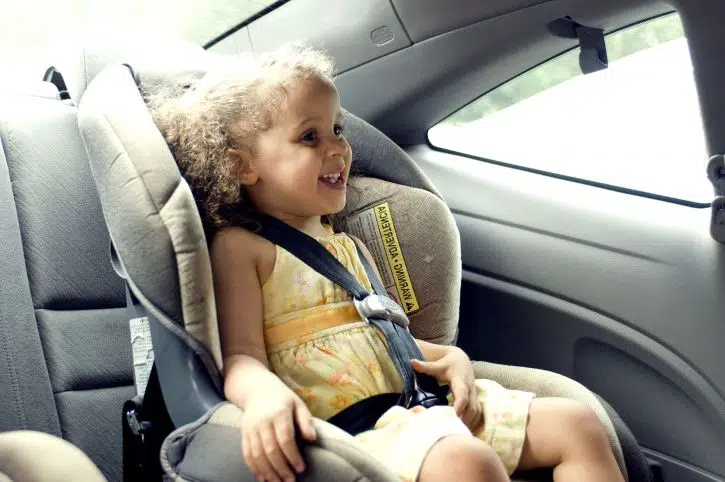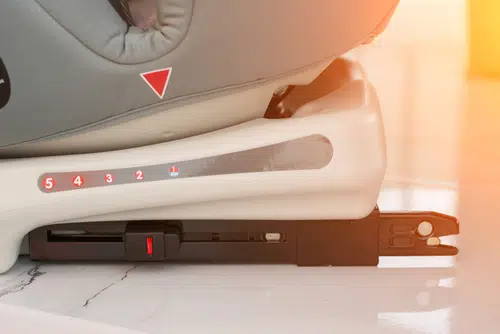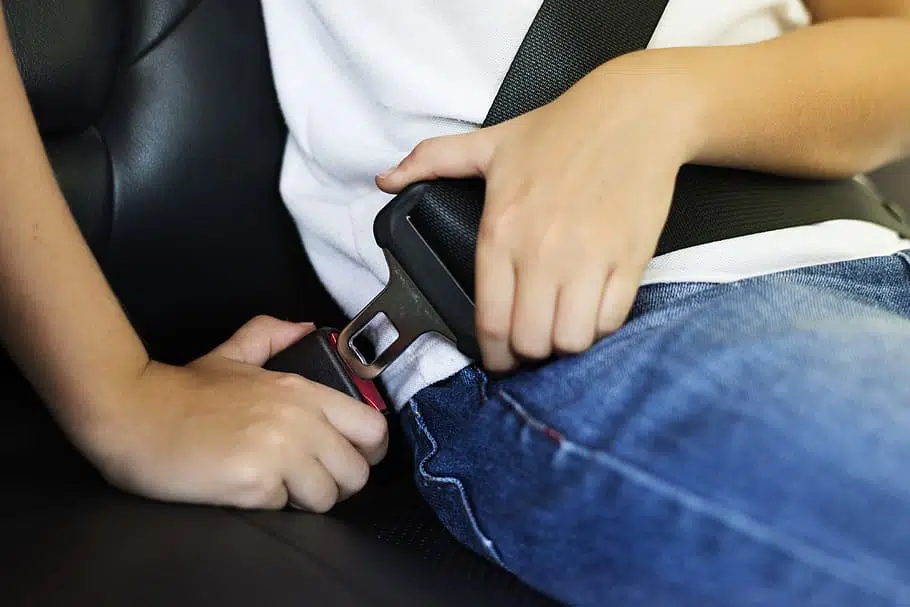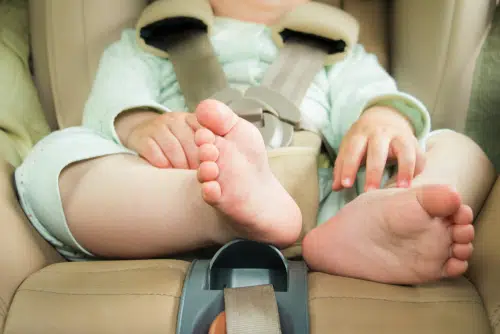Home » Blog » Car » Car Health & Safety » Car Seats for Kids Are a Must: Here’s Why
Categories
Tags
animal welfare
breed profile
buying a car
buying a pet
Car
car accessories
car care
car features
car insurance
Car safety
car sales
car service
cat
cat behaviour
cat body language
Cat Breeds
cat food
cat insurance
comprehensive car insurance
Dog
Dog Behaviour
dog body language
Dog Breeds
dog food
Dog Insurance
dog training
eco friendly cars
Kitten
New Car
pet accessories
pet activities
Pet Adoption
pet breeders
pet days of the year
pet fun stuff
Pet Health
pet insurance
pet parenting
Pet Safety
pet services
Puppy
rescue pets
road safety
road trip
safe driving
Recent Blog:
Facebook Posts
2 days ago
Growing old sometimes means we can’t take care of pets anymore. Find out some advice on what to do when this happens:![]()
![]() Senior Pet Parents – Contingency Plans for Your Pet – bit.ly/44bzwkS
... See MoreSee Less
Senior Pet Parents – Contingency Plans for Your Pet – bit.ly/44bzwkS
... See MoreSee Less
Senior Pet Parents' Contingency Plans for Pets
www.pd.com.au
Sometimes senior pet parents need more downtime. For older pet owners, this can be tricky to navigate if their dog or cat is full of beans and wants to4 days ago
Before you rev up the engine, let’s run through a checklist of things to do before starting your car. Not only do these steps ensure your safety (and that of others around you), but they also help in maintaining your vehicle's longevity.![]()
![]() Driving Tips: Your Checklist Before Starting Your Car -
... See MoreSee Less
Driving Tips: Your Checklist Before Starting Your Car -
... See MoreSee Less
Driving Tips: Your Checklist Before Starting Your Car
www.pd.com.au
Heading out for a drive? Hold up a second! Whether you're dashing off to work, running errands, or embarking on a road trip adventure, there are a few1 week ago
Are intestinal worms setting up camp in your dog’s gut without paying rent? Here’s how to spot the main culprits and get rid of them too:![]()
![]() Preventing, Identifying and Treating Intestinal Worms in Dogs - bit.ly/43YjCKu
... See MoreSee Less
Preventing, Identifying and Treating Intestinal Worms in Dogs - bit.ly/43YjCKu
... See MoreSee Less
Preventing, Identifying and Treating Intestinal Worms in Dogs
www.pd.com.au
Intestinal worms, such as roundworms in dogs are one of the least glamorous topics on the planet. These intestinal parasites that basically use our dogsOnly three decades ago car seats for kids and babies were seen as optional accessories (they became mandatory in the 1980s). Since then, population growth and road traffic have both boomed. And the laws that govern safety in these areas have become more certain, to better safeguard children in cars.
Thankfully, nowadays it’s a legal requirement to have your baby or child securely fastened in the car. Not only that but the car seat, capsule or booster seat needs to be correctly fitted for your child. Here’s why…
Car seats for kids literally save lives
‘Land transport’ accidents are the main cause of deaths in children in Australia. That’s why properly fitted and fastened car seats are a legal requirement for kids up to the age of seven as well as anyone under a height of 145cm.
It might seem obvious to say that a car seat needs to be fitted and adjusted correctly. But have you ever tried fitting one? If so, you’ll know it’s like building Lego from scratch each time you drive.
In fact, surveys show more than 70% of car seats are being used incorrectly. Car seats aren’t an intuitive shape to carry, move or fasten into position. Not to mention your real focus might be on your child or baby while getting the seat ready.
Strapping car seats at the correct angle and using the seatbelt to secure them properly is tricky, to say the least. While we’re on the topic of tricky-to-install, read how to fit three car seats in the back of your car.

What is ISOFIX on a car seat?
For many parents, ISOFIX car seats have solved the problem of tricky instalment. Rather than rely on a seatbelt and top tether to fix your car seat in place, ISOFIX locks directly onto the vehicle’s chassis.
The base of the ISOFIX has two fixed arms/connectors that slide into slots at the base of the car seat. Note that most new cars are ISOFIX compatible and have these fittings. Once the two connectors are fully slotted in, these latch and lock onto a fixed metal anchorage built into (and hidden under) the seat.
Unique to Australia is the mandatory third attachment point at the top of the car seat. It locks onto a fixed point in the car via a tether and clip. All three points unclip with buttons that look like and work like a safety belt release button.
ISOFIX is said to offer more protection than traditional car seats during an accident. There are two reasons for this. Firstly it’s easier to position an ISOFIX seat correctly. And secondly, the car seat is securely mounted to the car’s structure rather than strapped onto it.
ISOFIX car seats can still be secured in the old-school way using a seatbelt. So, if you’re getting an ISOFIX car later, but buying your car seat now, you can still buy an ISOFIX baby seat.
Watch this video to see how ISOFIX works compared with the traditional system.

Are car seats age based?
Car seats are designed for age and size. The main way to tell if you’re using the right car seat and adjustment is by basing it on your child’s size. Use the shoulder height markers on the car seat to check if it’s the right fit.
If your child’s the right age to move up to a new seat but they’re still too small then keep using the one you’re on. If they’re already big enough for a seat in the next age group, move them onto that one even if they’re still the right age for the current one.
Here’s a guide to car seats according to age groups:
- Up to six months: rearward facing car seat with an inbuilt harness
- Six months – four years: rear-facing or forward-facing car seat with an inbuilt harness (it’s said to be safer to keep children facing backwards as long as possible)
- Four years – seven years: forward-facing car seat with an inbuilt harness or a booster seat with a seatbelt or child safety harness
- Seven years – 16 years: children who are too small to use a regular seatbelt (under 145 cm) should use a booster seat and seatbelt. Better yet, keep your child as secure as possible with a booster seat that goes beyond that size
Extra safety tips
Don’t be too hasty with moving your child out of car seats for kids. Because as it turns out the average Australian child won’t hit 145cm until they’re 11 years of age?!
Also remember a car seat with a five-point harness is often seen as the safest option when compared to those with two over-shoulder straps or a lap sash booster seat.
Kids grow fast. Check the harness and shoulder height regularly so you can make adjustments for the best fit.
And know that the best position for your child’s car seat is in the back row of seats. If possible place the seat on the back passenger side, as this is the absolute safest place in the car.
Read about more baby car safety measures.
At what age can a child use a regular seat belt?
Once kids are seven years and up, they can legally use a car seat belt. But the main factor in effective restraint is height so most seven-year-olds won’t be big enough. Seat belts are designed for the average adult, and you need to be at least 145cm to use them.
So, to stay safe and remain on the right side of the law, kids between seven and 16 years of age should use the appropriate restraints and seats for their height.
A nifty way to check if your child is big enough to use a regular seatbelt is checking if they pass the ‘five step test’.
Here’s how it works:
- Your child can sit comfortably with their back right up against the seat
- Their knees can bend in front of the seat edge when they sit right back
- The lap section of the seat belt fits low enough to cross your child’s hips and touch their thighs
- The sash part of the seat belt is in the middle of their shoulder
- They can stay seated properly in this position for the whole trip without slumping

What do I need to know when buying a car seat?
Besides getting the correct size and type of car seat for kids there are a few more things to consider. Here’s what else you need to know about buying a car seat in Australia:
- Only buy approved car seats that meet the Australian/New Zealand Standard AS/NZS1754. The standards label must be on the car seat itself and on the car seat packaging
- Car seat accessories need to meet the Australian/New Zealand Standard AS/NZS 8005. So, look for inserts, covers, seatbelt modifiers etc. that indicate this Standard
- Rear facing car seats can’t be used in the front seat of cars with airbags (in fact, car seats should always be in the back seat unless your only option is a single cab ute)
- Convertible car seats can be fitted in rear-facing or forward-facing position
- Combination car seats can adapt from being suitable for forward-facing with an inbuilt harness to being used as booster seats with a regular seatbelt
- Check if a car seat fits your car before making a purchase
- Car seats expire after 10 years, so you may need to buy a new one for your younger children
- It’s better not to buy a second-hand car seat because the wear and tear are hard to see/gauge. For this reason, it’s also advisable to replace car seats involved in severe car crashes. Even if they seem to be in good working order.
Car safety on the road
If anything happens while you’re on the road, the last thing you want to think about is money. With car insurance, repair or replacement up to the agreed/market value will be easier on your pocket.
Already have car insurance but not with PD Insurance? Get a quote today and see what you can save.
Share On:




